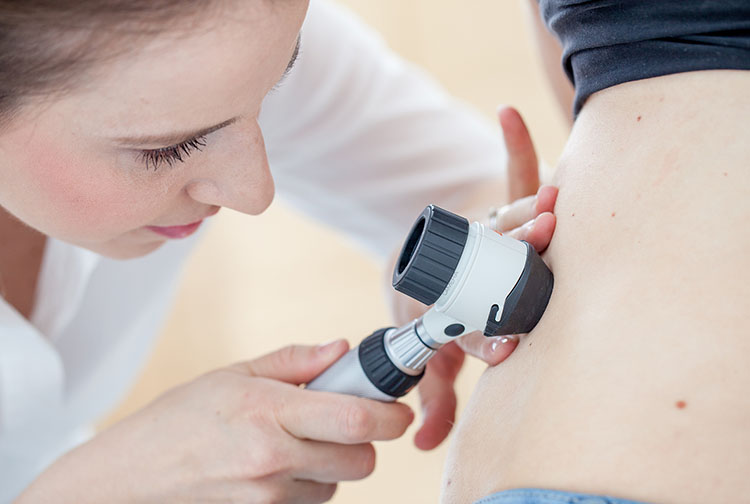By providing a magnified view of the skin's surface and underlying layers, dermoscopy offers unparalleled accuracy in evaluating moles and other skin lesions. Dermatology has witnessed significant advancements over the years, with Dermoscopy mole evaluation in Dubai emerging as a game-changer in skin diagnostics. This non-invasive technique has revolutionized the way dermatologists assess and monitor moles, ensuring early detection of potential skin issues. This blog explores how dermoscopy is transforming dermatology, its benefits, and why it has become an essential tool for skin health management.
What is Dermoscopy?
Understanding the Basics
Dermoscopy, also known as dermatoscopy, is a diagnostic procedure that uses a specialized tool called a dermatoscope to examine skin lesions. This device combines magnification and lighting to provide a clear, detailed view of the skin's surface and subsurface structures.
How It Works
The dermatoscope allows dermatologists to visualize patterns, colors, and structures within a mole or lesion that are invisible to the naked eye. This enhanced view helps in distinguishing between benign and potentially malignant growths, making it a critical tool for the early detection of skin cancer.
- Non-invasive and painless procedure.
- Provides a magnified view of skin structures.
- Helps differentiate between benign and malignant lesions.
The Role of Dermoscopy in Mole Evaluation
Early Detection of Skin Abnormalities
One of the most significant advantages of Dermoscopy Mole Evaluation is its ability to detect skin abnormalities at an early stage. By identifying subtle changes in moles, dermatologists can intervene promptly, reducing the risk of complications.
Accurate Diagnosis
Dermoscopy enhances diagnostic accuracy by revealing specific patterns associated with different types of skin lesions. This reduces the need for unnecessary biopsies and ensures that only suspicious moles are further investigated.
Monitoring Moles Over Time
For individuals with multiple moles or a history of skin issues, dermoscopy serves as an excellent tool for long-term monitoring. Regular evaluations help track changes in moles, ensuring timely action if any abnormalities are detected.
- Enables early detection of skin cancer.
- Improves diagnostic accuracy.
- Facilitates long-term mole monitoring.
Benefits of Dermoscopy in Dermatology
Non-Invasive and Pain-Free
Unlike traditional biopsy methods, dermoscopy is entirely non-invasive and pain-free. Patients can undergo the procedure without any discomfort, making it a preferred choice for mole evaluation.
Quick and Convenient
The procedure is quick, often taking only a few minutes per mole. This makes it convenient for both patients and dermatologists, allowing for efficient evaluations during routine check-ups.
Enhanced Patient Confidence
By providing clear and accurate results, dermoscopy boosts patient confidence in their diagnosis and treatment plan. It also encourages individuals to undergo regular skin checks, promoting overall skin health.
- Painless and non-invasive.
- Quick and efficient procedure.
- Builds patient trust and confidence.
Why Dermoscopy is Essential for Skin Health
Preventing Skin Cancer
Skin cancer, particularly melanoma, can be life-threatening if not detected early. Dermoscopy plays a crucial role in identifying suspicious moles that may indicate the early stages of skin cancer, enabling timely treatment.
Reducing Unnecessary Procedures
Traditional methods of mole evaluation often lead to unnecessary biopsies, causing anxiety and discomfort for patients. Dermoscopy minimizes this by accurately identifying which moles require further investigation.
Promoting Skin Awareness
Regular dermoscopy evaluations encourage individuals to be more aware of their skin health. This proactive approach helps in identifying potential issues before they escalate.
The Future of Dermoscopy in Dermatology
Integration with Advanced Technologies
The future of dermoscopy lies in its integration with advanced technologies like artificial intelligence (AI) and machine learning. These innovations can further enhance diagnostic accuracy and streamline the evaluation process.
Expanding Accessibility
As awareness about the benefits of dermoscopy grows, more dermatology practices are adopting this technology. This expansion ensures that patients worldwide have access to accurate and reliable mole evaluations.
Continuous Improvements
Ongoing research and development in dermoscopy are leading to continuous improvements in the technique. These advancements promise even greater precision and efficiency in the years to come.
Conclusion
Dermoscopy Mole Evaluation has undoubtedly transformed the field of dermatology, offering a reliable and efficient method for assessing skin health. By enabling early detection, improving diagnostic accuracy, and promoting proactive skin care, dermoscopy has become an indispensable tool for both patients and dermatologists. As technology continues to evolve, the future of dermoscopy promises even greater advancements, ensuring better outcomes for skin health worldwide. Whether you have concerns about a specific mole or simply want to stay on top of your skin health, dermoscopy provides a safe, effective, and non-invasive solution.






Comments